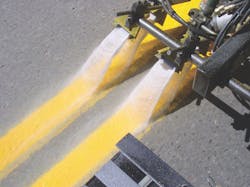Statistics developed by the National Highway Traffic Safety Administration (NHTSA) indicate that driver behavior is responsible for 94% of all crashes. The agency and its state counterparts support a variety of programs targeted at changing and improving driver behavior. Areas of focus include seat belt advocacy, distracted and drowsy driving, alcohol and drug-impaired driving, and law enforcement, especially in relation to speed reduction.
Behavioral programs require a change in culture, and there have been some significant and beneficial changes over the last 20-plus years. As former AAA Foundation for Traffic Safety Executive Director Peter Kissinger has noted, a past cultural phenomenon was to “have one for the road.” Now, having a “designated driver” has become more of a cultural norm. Additionally, children learn to “buckle up” years before they obtain a driver’s license.
Despite these commendable strides, there are still people who drive impaired or drowsy or who don’t use their seat belts. How do members of the roadway safety and infrastructure industry further influence roadway-user behavior positively and keep those users from making a fatal mistake? The answer lies in infrastructure. Effective roadway safety infrastructure provides the last chance to influence and correct negative behavior at the very moment that it occurs.
Here are a few examples: Both permanent overhead message signs and portable changeable message signs serve as reminders to promote safe and compliant behavior. Many states use these to reinforce “Click it or Ticket” campaigns or to notify drivers regarding DUI enforcement. Speed feedback signs, especially in work zones, influence drivers to reduce their travel speeds. Red-light cameras assist in reducing the number of “T-bone” crashes at intersections. Channelizers separate cyclist traffic from automobile traffic and create a safer travel way for all road users. Both center and edgeline rumble strips and stripes alert drowsy drivers that they are about to leave the roadway.
The roadway safety industry also has invented creative countermeasures to some very specific behavioral challenges. For example, impaired drivers—whether from alcohol or other substances—tend to focus on the roadway immediately in front of them rather than scanning further ahead. Raised reflective pavement markers, wrong-way flashing signs and bidirectional pavement markings are just three examples of countermeasures that are intended to prevent an impaired driver from entering a roadway in the wrong direction.
Additionally, properly installed roadway safety infrastructure devices can save the lives of those who make the ultimate error. Both median barriers and roadside guardrails have saved countless lives of drivers who departed the roadway (see the recent ATSSA case study book on the Safety Benefits of Median Barrier and Roadside Guardrail). Crash cushions absorb the impact of errant drivers as well. Truck-mounted attenuators (TMAs) prevent vehicles from entering work zones to the benefit of both drivers and roadway workers, and various intrusion and wrong-way alarm systems alert workers when a work zone has been breached and law enforcement when a driver is traveling in the wrong direction.
Almost every state, major city and relevant trade association has adopted the goal of moving Toward Zero Deaths or achieving Vision Zero on our roadways. We need to ensure that life-saving roadway safety infrastructure devices continue to be properly deployed to aid in realizing that goal.



